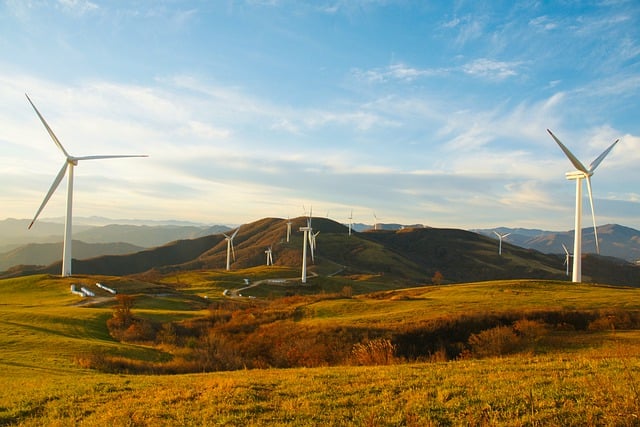The Science of Sustainable Energy: Understanding the Basics
The concept of sustainable energy has gained remarkable importance in the face of contemporary challenges such as climate change, environmental degradation, and energy security. As we delve into the science of sustainable energy, we uncover the principles behind various renewable energy sources, their implementation, and their potential contributions to a more sustainable future.
Defining Sustainable Energy
Sustainable energy refers to energy that is produced and consumed in a manner that is renewable, environmentally friendly, and socially equitable. This energy arises from natural processes that are replenished constantly—such as sunlight, wind, and geothermal heat—thus ensuring that it can be harvested without depleting resources over time. The aim of sustainable energy is to minimize the negative impacts on the environment while maximizing energy availability for future generations.
Why Sustainable Energy Matters
The necessity for sustainable energy sources can be traced back to various factors, including:
- Climate Change: The burning of fossil fuels releases significant amounts of greenhouse gases (GHGs) into the atmosphere, contributing to global warming. Sustainable energy systems offer a pathway to reduce GHG emissions.
- Resource Depletion: Conventional energy resources, such as coal, oil, and natural gas, are finite and are being depleted at an alarming rate. Transitioning to sustainable energy sources can alleviate dependency on these diminishing resources.
- Energy Security: Fostering energy independence through local renewable resources helps nations reduce vulnerability to geopolitical tensions and fluctuating fossil fuel prices.
- Public Health: Fossil fuel extraction and consumption lead to pollution and various health hazards. Sustainable energy sources can improve air quality and overall public health.
Types of Sustainable Energy Sources
There are several types of sustainable energy sources. Each type harnesses natural processes and has distinct characteristics and advantages.
Solar Energy
Solar energy is derived from the sun’s radiation. It can be captured using solar panels and converted into electricity or used for heating purposes. Solar power is highly versatile and can be utilized on both small scales (like residential rooftops) and large scales (like solar farms). The technology has seen rapid advancements, making it increasingly efficient and affordable.
Wind Energy
Wind energy harnesses the kinetic energy of wind through turbines, converting it into electricity. Wind farms can be located onshore or offshore, with offshore installations often benefiting from stronger and more consistent winds. Wind energy generation emits no direct pollutants and has an increasingly smaller land footprint due to technological advances.
Hydropower
Hydropower relies on the energy of flowing water to generate electricity. Dams are often constructed to create reservoirs, allowing controlled water flow to turbines. While hydropower is a significant source of renewable energy globally, large-scale installations can have substantial ecological impacts, including habitat destruction and changes in water quality.
Geothermal Energy
Geothermal energy utilizes the heat from beneath the Earth’s surface. This energy can be harnessed for electricity generation or for direct heating applications. Geothermal power plants can provide a reliable and constant energy supply, as the heat from the Earth is consistent throughout the year.
Biomass Energy
Biomass energy derives from organic materials, such as plant and animal waste. This energy source can be converted into electricity, heat, or biofuels. While biomass is considered renewable, its sustainability largely depends on management practices and sourcing. When done responsibly, biomass can contribute to waste reduction and lower net GHG emissions.
The Science Behind Renewable Energy Technologies
Solar Technology
Solar power generation primarily uses photovoltaic (PV) cells to convert sunlight directly into electricity. When photons from sunlight strike the semiconductor material in PV cells, they free electrons, creating an electric current. Additionally, solar thermal systems harness heat from the sun to generate steam, which drives turbines for electricity production.
Wind Technology
Modern wind turbines consist of large blades connected to a rotor, which spins when wind passes over the blades, converting kinetic energy into mechanical energy. This mechanical energy drives a generator, producing electricity. The energy yield is predominantly influenced by wind speed, turbine design, and site selection.
Hydropower Technology
Hydropower generation works by directing water flow through turbines. When water from a reservoir flows over the turbine blades, it causes them to spin, which spins a generator to produce electricity. Furthermore, run-of-the-river systems utilize river flow without large reservoirs, minimizing ecological impacts.
Geothermal Technology
Geothermal plants use steam from heated underground water or hot rocks to turn turbines. The steam is routed through a turbine system, generating electricity. Enhanced geothermal systems (EGS) involve injecting water into hot, dry rock formations to increase accessibility to geothermal energy.
Biomass Technology
Biomass can be directly burned for heat or transformed into biofuels through processes like fermentation or anaerobic digestion. The combustion of biomass produces steam that drives electricity generation, while biogas produced from decomposition can be utilized directly for cooking or heating.
Challenges of Sustainable Energy
Despite the numerous advantages of sustainable energy, there are challenges associated with its widespread implementation:
- Intermittency: Many renewable sources are weather-dependent, leading to variability in energy production. Solutions like energy storage and diversified energy portfolios are essential to address this challenge.
- Infrastructure Requirements: Transitioning to sustainable energy often requires significant investment in new infrastructure, such as smart grids and energy storage systems.
- Land Use and Environmental Impact: Some renewable energy projects can lead to land use conflicts and wildlife habitat disruption. Careful planning and community engagement are vital.
- Economic Viability: While the costs of renewable technologies have declined, initial capital investments can still be a barrier for some regions, particularly in developing nations.
The Future of Sustainable Energy
The potential for sustainable energy is vast, and as technology advances, the global energy landscape is likely to change dramatically. Innovations in energy storage, grid management, and smart technology integration offer opportunities to enhance energy efficiency and reliability. Policies that support sustainable energy initiatives, such as subsidies for renewable technologies or carbon pricing mechanisms, will further facilitate this transition.
The role of public engagement and awareness in sustainability initiatives cannot be overlooked. As individuals and communities become more informed about the benefits of sustainable energy, they can drive demand for cleaner energy solutions, influence energy policies, and advocate for sustainable practices.
Conclusion
The science of sustainable energy holds the promise of creating a cleaner, more equitable energy future. As we embrace renewable energy technologies and understand their underlying principles, we take significant steps towards mitigating climate change, conserving resources, and fostering global cooperation. By prioritizing sustainable energy solutions, we can ensure that future generations inherit a healthier planet and a stable energy system.



